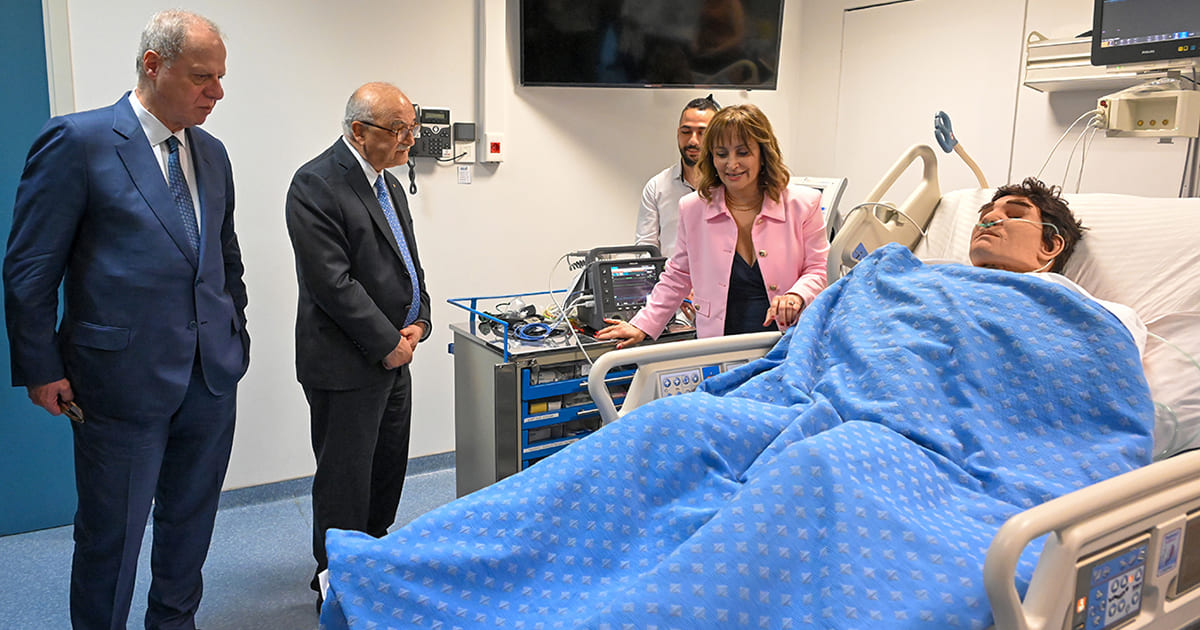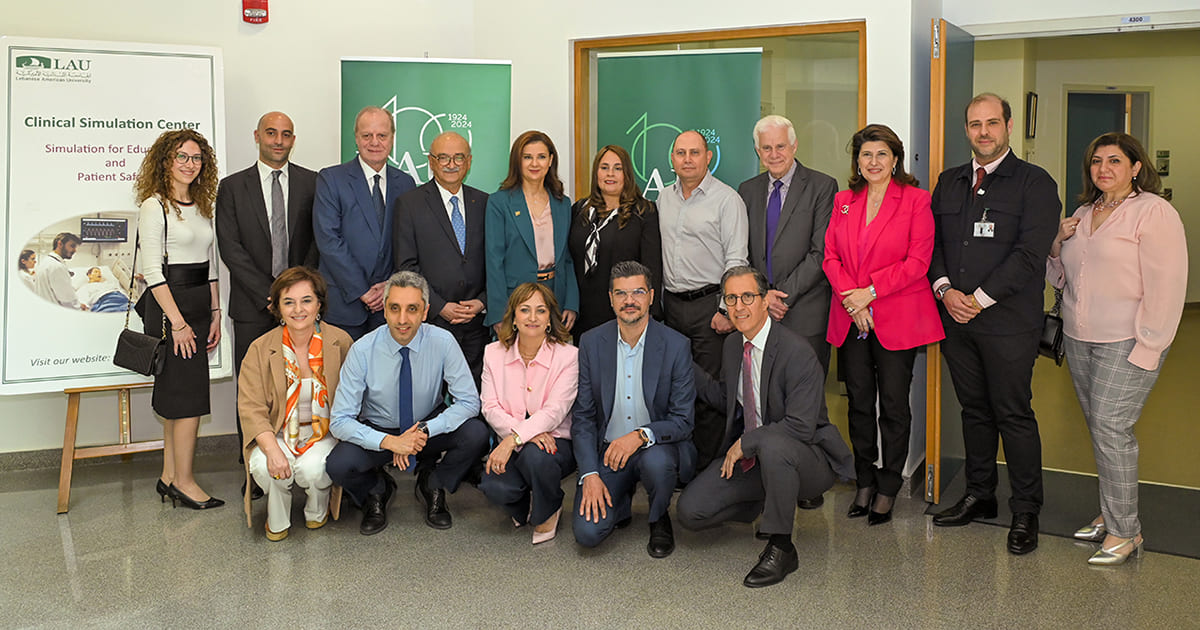LAU’s Clinical Simulation Center Receives a Major Donation from Intermedic
A longtime supporter of the university, the Farah family upholds its legacy of commitment to healthcare education and practice.
The intensive care unit at LAU’s Clinical Simulation Center has received a major upgrade thanks to a donation from Intermedic, which the university gratefully recognized at a dedication ceremony May 10, 2024.
With the new equipment, “we can create incredibly realistic scenarios, building exceptional learning ecosystems that can push our medical, pharmacy and nursing trainees to excel in complex situations. Ultimately, this translates into saving lives,” said Dean of the Gilbert and Rose-Marie Chagoury School of Medicine Sola Aoun Bahous.
Since 2012, equipment donated by Intermedic has benefited generations of LAU health sciences students, physicians and patients, and has been featured at ground-breaking symposia hosted by the university, such as the Head and Neck Symposium and the Interventions in Hybrid Operating Room Conference. The company has also supported all the university’s international conferences on medical education, the LAU Solidarity Fund and scholarships for students.
This most recent gift in February 2024—valued at $110,000—includes an electric bed (Progressa PRO-885), a patient monitor (IntelliVue MX700), a defibrillator (HeartSart Intrepid), an infusion pump (Alaris GW) and a syringe pump (Alaris GH Plus).
LAU has long thrived on building meaningful bonds with its community. The partnership with Intermedic, a leading medical equipment company established more than 70 years ago by Jean Farah, is a shining example.
At the ceremony on May 10, LAU President Michel E. Mawad pledged the university’s commitment to put the equipment to “very good use in the education of the physicians of the future, so that they may continue the tradition that has made Lebanon a leader in healthcare delivery.”
Dr. Mawad also drew inspiration from Intermedic’s promise for quality medical education, highlighting how the company has long provided “a source of strength that we know we can count on, and for that we owe a debt of gratitude that we are proud to acknowledge.”
For Intermedic VP and General Manager Michel Farah, keeping a two-way stream of learning and cooperation between healthcare education and the industry is a firmly rooted principle. “Over the years,” he said, “we have learned quite a lot from the academic programs you provide, while also feeding your knowledge with the latest advances and innovations from the field.”
Intermedic’s Deputy General Manager Joy Farah and a number of company representatives, as well as LAU vice presidents, deans, faculty and staff were also present.
The attendees watched as the CSC staff simulated a medical emergency that is likely to occur in an ICU setting, demonstrating the effectiveness of the Intermedic equipment. This demonstrated, in real time, how a typical clinical simulation unfolds as healthcare trainees—LAU students who use the CSC facility—rush to treat medical emergencies.
In addition to the demonstration, CSC Director Hanan Barakat underscored how the new equipment can be used to create countless intensive-care emergencies that present invaluable learning opportunities for the trainees.
Speaking about the importance of simulation in teaching, she said: “In the past, we used to say: ‘See one, do one, teach one,’” meaning that with every exposure to a new patient, healthcare students acquire new learning. “Today,” she added, “simulation enables trainees to learn from their errors without risking any harm to the patient.”
Associate Director of the CSC Wael Salameh also pointed out how simulation-based education can better equip learners with the skills needed in both technical and non-technical aspects of medicine, especially taking into consideration the many challenges that now face individuals working in healthcare services.
Dr. Salameh also emphasized the advantages of simulation and technological advancement with regard to the growing needs of patients and considering patient-to-healthcare provider ratios: “This electric bed, for example, requires fewer staff members to put a patient in an upright position, as we have seen in the simulation, so it helps fill the gap,” he said.
The donated equipment will take center stage at the upcoming Fourth International Conference on Medical Education. At the conference, said Dr. Bahous, LAU will host a dedicated workshop showcasing the cutting-edge technology and exploring its learning potential. The university will later share a summary of the activities and insights gained from using it.

